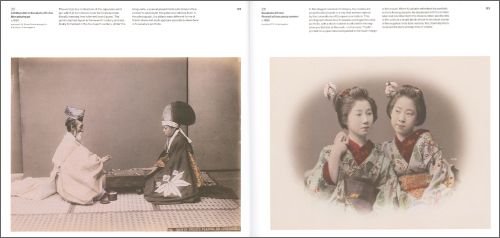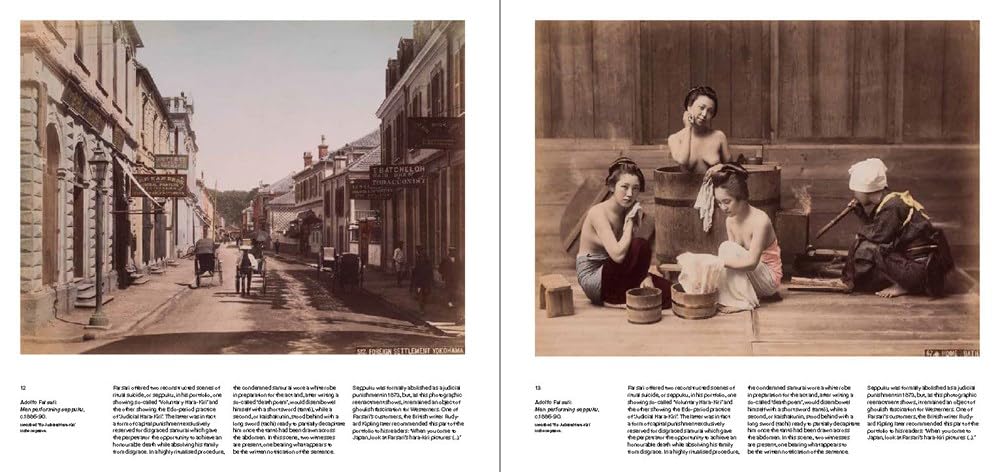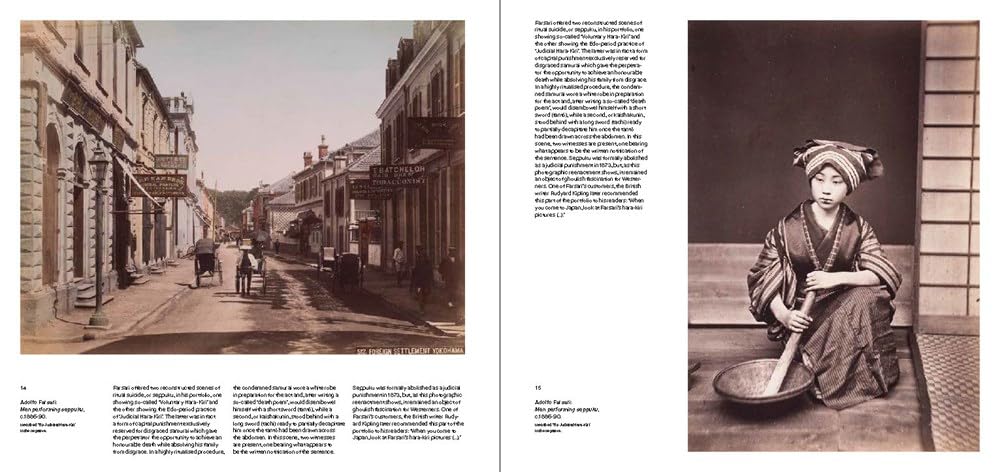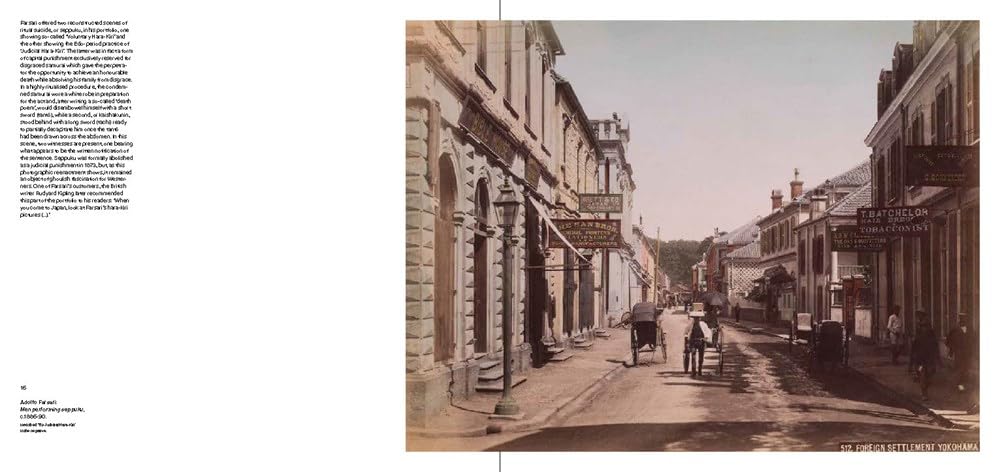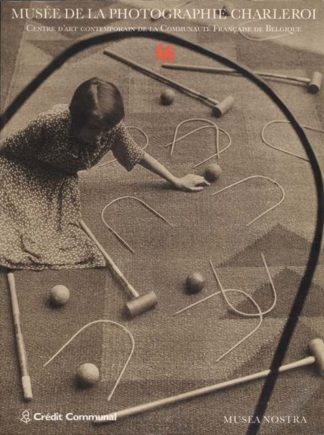Entre le crépuscule du shogunat Tokugawa (1603-1867) et la fin de l’ère Meiji (1868-1912), la photographie offre un aperçu unique de la transformation rapide du Japon d’une société féodale isolée à un État moderne et industrialisé. Au cours des quatre décennies qui ont suivi l’ouverture du pays en 1853, la caméra a évolué d’une nouveauté importée à un témoin familier de la vie quotidienne japonaise.
Opérant à partir des ports du Traité de Yokohama et d’ailleurs, les premiers praticiens de la photographie ont exploité un commerce souvent précaire d’images du Japon et ont jeté les bases de ce qui allait bientôt devenir une industrie hautement compétitive avec une portée mondiale. Qu’elles soient chéries comme souvenirs d’une terre exotique d’une imagination fertile ou comme documents visuels d’une société en pleine mutation, ces images de photographes étrangers et japonais, souvent emballées dans des albums exquis, Il a bénéficié d’une large circulation à l’étranger et a joué un rôle important dans l’influence de la perception du Japon en Occident au début du Xxe siècle.
Between the twilight years of the Tokugawa shogunate (1603–1867) and the end of the Meiji Era (1868–1912) that followed it, photography offered a unique insight into the rapid transformation of Japan from an isolated, feudal society to a modern, industrialised state. In the four decades that followed the opening of the country in 1853, the camera evolved from an imported novelty to a familiar witness of Japanese daily life.
Operating from the Treaty Ports of Yokohama and elsewhere, early practitioners of photography plied an often precarious trade in images of Japan and laid the foundations of what would soon become a highly competitive industry with a global reach. Whether cherished as souvenirs of an exotic land of fond imagination or curated as visual documents of a fast-changing society, these images by foreign and Japanese photographers, often packaged in exquisitely produced albums, enjoyed a wide circulation abroad and played an important role in influencing perceptions of Japan in the West well into the early twentieth century.


